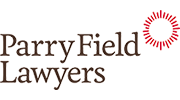State schools, state-integrated schools and kura are governed and managed by a school board. The board is a Crown entity as it receives public funding and is in the public sector. A board has no more than 7 members and at least 3 parent representatives.[1] Members can be co-opted, appointed, selected or elected to the board and members are all equal in standing.
The board is responsible for the governance and management of the school which encompasses setting policies as to how the school is to be controlled and managed.[2] Section 127 of the Education and Training Act 2020 (ETA) sets out a board’s primary objectives when governing a school, they must ensure:
- every student at the school is able to attain their highest possible standard in educational achievement; and
- the school—
- is a physically and emotionally safe place for all students and staff; and
- gives effect to relevant student rights set out in this Act, the New Zealand Bill of Rights Act 1990, and the Human Rights Act 1993; and
- takes all reasonable steps to eliminate racism, stigma, bullying, and any other forms of discrimination within the school; and
- the school is inclusive of, and caters for, students with differing needs; and
- the school gives effect to Te Tiriti o Waitangi, including by—
- working to ensure that its plans, policies, and local curriculum reflect local tikanga Māori, mātauranga Māori, and te ao Māori; and
- taking all reasonable steps to make instruction available in tikanga Māori and te reo Māori; and
- achieving equitable outcomes for Māori students.
In meeting these primary objectives, a school board must comply with all obligations under the ETA or any Act, including having particular regard to the statement of national education and learning priorities (NELP) issued by the Minister of Education under s 5, and performing its functions and powers in a financially responsible way.[3] A board must also give effect to a board’s obligations in relation to teaching and learning programmes along with monitoring and reporting student progress.[4] This is inclusive of things such as managing student behaviour, staffing matters, handling complaints, health, safety and wellbeing for students and staff, strategic planning and reporting, building relationships and actively engaging with the community.
A board can appoint, suspend, and dismiss school staff and the principal.[5] The school principal is the board’s chief executive and retains the discretion to manage the school’s day-to-day administration however they see fit, though they must comply with the board’s policy directions.[6] Generally, the board as the governance body determines the what, the ends and the policies whereas the principal as the management leader determines the how, the means and the procedures. Board members are to adhere to any code of conduct issued by the Minister of Education.[7] The Ministry has now issued a code of conduct, which can be found at: https://www.education.govt.nz/school/boards-information/boards-of-schools-and-kura/code-of-conduct/
Private schools are governed and managed by their own independent boards. Managers of private schools must be fit and proper persons to manage the school.[8] When operating the school, managers must have regard to any NELP and ensure when developing and delivering the curriculum the principal and staff have regard to NELP also.[9] The obligation to have regard to NELP is a lower standard than required of State schools that must have particular regard under s 127. This section is in relation to schools ensuring students attain highest possible education standard, the school is safe, observes student’s rights, takes steps to eliminate racism, stigma, or bullying, the school is inclusive and caters for students with different needs and that it gives effect to the Te Tiriti o Waitangi. However, in decision making, managers of private schools still need to have given regard to the NELP.
Primary Objectives for State schools
Part 3, subpart 5 of the ETA governs the administration of all State schools (including State integrated schools but not including private schools). Section 127(1) notes that school boards have several primary objectives in governing a school.
For State integrated schools, the rules in Part 3 (including section 127) are subject to specific provisions set out in Schedule 6 of the ETA that protect the special character of the State integrated school.[10] Boards of State integrated schools must comply with the objectives set out in section 127 of the ETA, but in deciding how to do so they must also act in light of their special character in accordance with Schedule 6.
The primary objectives include to:[11]
- ensure that every student at the school is able to attain their highest possible standard in educational achievement;
- ensure that the school:
- is a physically and emotionally safe place for all students and staff;
- gives effect to relevant student rights set out in the ETA, the New Zealand Bill of Rights Act 1990, and the Human Rights Act 1993;
- takes all reasonable steps to eliminate racism, stigma, bullying, and any other forms of discrimination within the school;
- ensure that the school is inclusive and cater for students with differing needs; and
- ensure that the school gives effect to Te Tiriti o Waitangi.
Section 127(2) says that to meet these primary objectives, each school’s board must have particular regard to the NELP issued under section 5. The current NELP identifies six priorities for education:
Priority 1: Ensure places of learning are safe, inclusive, and free from racism, discrimination, and bullying.
Priority 2: Have high aspirations for every learner/ākonga, and support these by partnering with their whānau and communities to design and deliver education that responds to their needs and sustains their identities.
Priority 3: Reduce barriers to education for all, including for Māori and Pacific learners/ākonga, disabled learners/ākonga and those with learning support needs.
Priority 4: Ensure every learner/ākonga gains sound foundation skills, including languages, literacy, and numeracy.
Priority 5: Meaningfully incorporate te reo Māori into the everyday life of the place of learning.
Priority 6: Develop staff to strengthen teaching, leadership, and learner support capability across the education workforce.
Strategic Planning
State and state-integrated school boards must have in place a strategic plan which sets out its strategy for achieving its objectives for a 3-year period (unless determined by the Chief Executive of the Ministry of Education)), and an annual implementation plan each year which sets out how the board intends to implement that strategy during the year.[12]
The strategic plan must be submitted to the Chief Executive and Secretary of the Ministry of Education (the Secretary). Whilst preparing the plan the board is required to consult the school community, school staff, school student (where appropriate), and comply with other regulations such as for State integrated schools, ensuring it reflects their special character.[13] The proprietor of a State integrated School has the responsibility of ensuring the school’s special character is maintained.[14] The secretary can review the plan and require the board to amend it, or the board may make amendments to the plan on their own accord.[15]
The annual implementation plan must contain information required by regulations made under the ETA, it can also be amended by the board.[16] The board has a duty to monitor and evaluate its performance in achieving the objectives set out in the strategic plan.[17] Along with monitoring and evaluating the implementation of its strategy set out in the annual implementation plan in accordance with any regulations made under s 639 of the ETA.
The school’s performance in regard to the Strategic Plan must be reported on in the annual report as per s 145(3) of the ETA. Further, school boards are required to publish their strategic plan and annual implementation plan on their Internet site.[18]
These planning and reporting requirements help schools achieve their goals and remove barriers to success. It encourages relationships between school boards and their communities by facilitating communication and feedback, while increasing accountability of boards to their communities.
This article is general in nature and is not a substitute for legal advice. You should talk to a lawyer about your specific situation. Reproduction is permitted with prior approval and credit being given back to the source. Contact Kris Morrison at krismorrison@parryfield.com to request this or for any other questions.
[1] Education and Training Act 2020, s 119.
[2] Education and Training Act 2020, s 125.
[3] Education and Training Act 2020, s 127(2).
[4] Education and Training Act 2020, s 127(2)(b).
[5] Education and Training Act 2020, ss 128 and 129.
[6] Education and Training Act 2020, s 130.
[7] Education and Training Act 2020, ss 166-169.
[8] Education and Training Act 2020, sch. 7 cls. 2 and 6.
[9] Education and Training Act 2020, sch. 7 cl. 7.
[10] Education and Training Act 2020, schedule 6, clauses 24 & 58.
[11] Education and Training Act 2020, section 127(1).
[12] Education and Training Act 2020, s 138.
[13] Education and Training Act 2020, s 139.
[14] Education and Training Act 2020, sch. 6 cl. 1(3).
[15] Education and Training Act 2020, ss 140 and 141.
[16] Education and Training Act 2020, ss 143 and 144.
[17] Education and Training Act 2020, s 145.
[18] Education and Training Act 2020, s 146.




